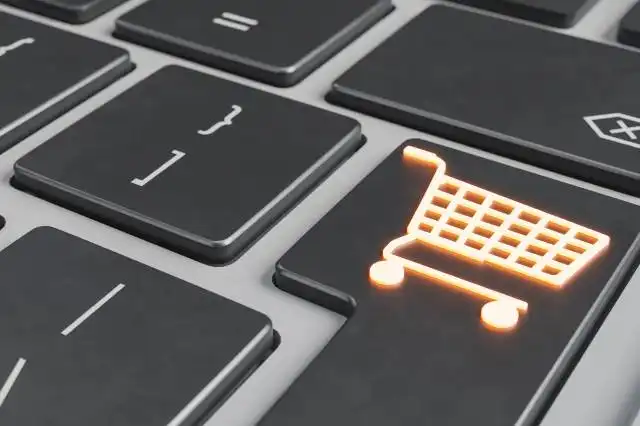Start an eBay Business
Turning Digital Dust into Glittering Profit: Your eBay Business Adventure
| Updated


EBAY BUSINESS
Embarking on an eBay business venture is like hopping on a virtual jet-set journey to a global marketplace. This business is an online platform where you can sell, buy, or auction off goods ranging from vintage collectibles to everyday essentials. Imagine having a yard sale but in the digital world, and with potential customers from all points of the continents. With your entrepreneurial spirit and a bit of online savviness, you could be transforming those unloved items lurking in your attic into glittering pots of profit!
Jump to Business Plan
RELATED BUSINESS IDEAS
Browse ALL Retail & Shopping Business Ideas
Discover Your Perfect Domain
Unlock the door to your online success with our hand-picked selection of premium domain names. Whether you're starting a new venture or rebranding an existing one, the right domain can set the tone for your digital presence. Browse through our curated list, each with its unique potential to enhance your brand's visibility and credibility.
EBAY MINI BUSINESS PLAN
This a quick reality check to help you identify the strengths and weaknesses of your business concept before you dive in.
Expected Percent Margin:
- Gross Margin: 20-30% (Varies depending on the product category and sourcing)
- Net Profit Margin: 10-15%
Earnings Expectations:
(Ranges are subject to product sourcing, volume, and other individual variations)
- Daily Earnings: $50 - $200
- Weekly Earnings: $350 - $1,400
- Monthly Earnings: $1,500 - $6,000
- Annual Earnings: $18,000 - $72,000
Actions to Hit Those Numbers:
Product Acquisition:
- Initial Investment: Start with around $1,000 - $2,500 in inventory. Clothes, collectibles, electronics are popular.
- Sourcing Products: Source from discount retailers, clearance sales, thrift stores, or buy wholesale.
eBay Store Set-Up:
- Account Setup: Create a professional eBay account.
- Listing: Optimize your product listings for eBay's search engine (search-friendly titles, clear pictures, detailed descriptions). Offers free shipping for competitive advantage (incorporate into price).
Marketing and Customer Acquisition:
- Pricing Strategy: Consider a "buy it now" price or explore auction strategy for rare items.
- Customer Service: Excellent service promotes word of mouth and positive reviews, improving your eBay reputation.
Sales and Shipping:
- Fulfillment: Aim to ship within one business day of purchase. Use eBay's shipping calculator to ensure accurate costs.
Cost Control:
- eBay and PayPal Fees: Factor these into your pricing. eBay charges insertion fees plus seller fees based on the price your item sells for.
- Shipping Supplies: Budget for boxes, packing material etc.
This is an estimated analysis, results vary based on location, product choice, time investment, market conditions and other factors. Consider a more in-depth analysis or consult a financial advisor for personalized advice.
NOT WHAT YOU HAD IN MIND? Here are more ideas



Browse ALL Retail & Shopping Business Ideas
Grab Your Business Website Name
Before you get caught up in the whirlwind of setting up your business, invest in a domain name. It's a small but significant step that lays the foundation for your brand and makes it easier for customers to find and trust you. Just like you wouldn't build a house without securing the land first, don't build a business without securing your domain name.
"Why? Can't that wait?" Here's why it shouldn't
Step 1: Determine if Starting an eBay Business is Right for You
Breakdown of Startup Expenses
Starting an eBay business requires some initial investments. The most important of these is the cost of the items you plan to sell. You should consider the cost of the items, shipping, and any other fees associated with the product. Additionally, you may need to purchase supplies such as packaging materials, labels, and other items to help you ship your products. Finally, you may need to invest in a website or other online presence to help promote your business.
Breakdown of Ongoing Expenses
Once your eBay business is up and running, there are a few ongoing expenses to consider. These include fees associated with listing items, payment processing fees, and the cost of shipping supplies. Additionally, you may need to invest in advertising or marketing to help promote your business. Finally, you may need to invest in additional storage space or other resources to help you manage your inventory.
Examples of Ways to Make Money
There are a variety of ways to make money on eBay. You can sell new or used items, offer services, or even create digital products. Additionally, you can offer special deals or discounts to help attract customers. You can also use eBay's auction feature to help you get the best price for your items. Finally, you can use eBay's marketplace to help you reach a larger audience and increase your sales.
Step 2: Name Your eBay Business
When naming your eBay business, it is important to keep a few things in mind. First, pick a name that is easy to remember and that reflects the type of items you will be selling. For example, if you are selling vintage clothing, you may want to include the word “vintage” in your business name. Additionally, make sure the name is not already in use by another business. You can check the US Patent and Trademark Office website to make sure the name is not already taken.
Second, you should consider whether the name you choose is available as a domain name. Having a website with the same name as your business can help with branding and marketing. If the domain name is not available, you can consider adding a word to the name or using a different domain extension, such as .net or .org.
Third, you should think about the potential for growth. If you plan to expand your business in the future, you may want to pick a name that is not too specific to the items you are currently selling. This will give you more flexibility in the future.
Finally, you should consider the potential for trademarking your business name. If you plan to trademark your business name, you should make sure it is not too similar to the names of other businesses. Additionally, you should make sure the name is not too generic, as generic names are not eligible for trademarking.
Step 3: Set Up Your eBay Account
To set up your eBay account, you will need to create a user name and password. You will also need to provide your contact information, including your name, address, and phone number. Once you have created your account, you will need to verify your identity by providing a valid form of identification. Once your identity is verified, you will be able to start selling items on eBay.
Setting Up Your Payment Options
Once you have set up your eBay account, you will need to set up your payment options. You can choose to accept PayPal, credit cards, or other payment methods. You will need to provide your banking information and set up your payment preferences. You will also need to set up your shipping preferences, including the type of shipping you will offer and the cost of shipping.
Setting Up Your Listings
Once you have set up your payment and shipping preferences, you will need to create your listings. You will need to provide detailed descriptions of the items you are selling, including photos and measurements. You will also need to set the price of the item and any additional fees, such as taxes or shipping costs. You will also need to set the duration of the listing and the payment terms.
Promoting Your Listings
Once you have created your listings, you will need to promote them. You can promote your listings by using social media, email marketing, or other methods. You can also use eBay’s promotional tools, such as the “Featured Listings” feature, to help draw attention to your listings. Additionally, you can use keywords and other SEO techniques to help your listings appear higher in search results.
Step 4: Create a Business Plan
Creating a business plan is an important step in starting an eBay business. It should include a detailed description of the business, including the goals and objectives, a market analysis, a financial plan, and a timeline for achieving those goals. It should also include a description of the products and services you plan to offer, as well as the strategies you plan to use to reach your target audience.
Researching the Market
Before creating a business plan, it is important to research the market to determine the potential for success. This includes researching the competition, the target audience, and the potential for growth. It is also important to research the legal and financial aspects of starting an eBay business, such as taxes, licenses, and permits.
Writing the Business Plan
Once the research is complete, it is time to write the business plan. This should include a detailed description of the business, the goals and objectives, a market analysis, a financial plan, and a timeline for achieving those goals. It should also include a description of the products and services you plan to offer, as well as the strategies you plan to use to reach your target audience.
Seeking Advice
It is important to seek advice from professionals when writing a business plan. This can include a lawyer, accountant, or business consultant. They can provide valuable insight into the legal and financial aspects of starting an eBay business, as well as advice on how to create a successful business plan.
Finalizing the Business Plan
Once the business plan is complete, it is important to review it with a critical eye. This includes ensuring that all of the information is accurate and up-to-date, as well as making sure that the goals and objectives are realistic and achievable. Once the business plan is finalized, it is time to move on to the next step in starting an eBay business.
Step 5: Source Your Inventory
Finding suppliers to provide you with the inventory you need to start your eBay business is an important step. You can find suppliers through online marketplaces, trade shows, and even through word of mouth. When looking for suppliers, it is important to consider the quality of the products they offer, their pricing, and the terms of the agreement. You will also want to make sure that the supplier is reliable and will be able to provide you with the inventory you need in a timely manner.
Buying in Bulk
Buying in bulk is a great way to save money when starting an eBay business. You can purchase items in bulk from wholesalers or manufacturers and then resell them on eBay. This can help you save money on the cost of your inventory and allow you to make more money on each sale. When buying in bulk, it is important to consider the quality of the items, the shipping costs, and the minimum order requirements.
Dropshipping
Dropshipping is a great way to start an eBay business without having to purchase or store any inventory. With dropshipping, you can list items on eBay and then have the supplier ship the item directly to the customer. This eliminates the need to purchase or store any inventory and allows you to focus on marketing and customer service. When considering dropshipping, it is important to research the supplier to make sure they are reliable and have a good reputation.
Other Sources
There are other sources you can use to source your inventory for your eBay business. You can purchase items from online auctions, garage sales, and even thrift stores. You can also purchase items from other eBay sellers or even create your own items to sell. When sourcing your inventory, it is important to consider the quality of the items, the cost, and the shipping costs.
Step 6: Set Your Prices
When setting prices for your items, it is important to consider the cost of the item, the value of the item, and the current market prices for similar items. It is also important to consider the cost of shipping, packaging, and any other fees associated with selling the item. You should also consider the amount of time and effort that you will need to put into the item before you can list it. There are several pricing strategies that you can use to help you determine the best price for your item.
The first pricing strategy is to use the “cost plus” method. This method involves adding the cost of the item, the cost of shipping, and any other associated fees to the cost of the item. This will give you a base price for the item. You can then add a markup to the base price to determine the final price.
The second pricing strategy is to use the “market comparison” method. This method involves researching the current market prices for similar items and then setting your price accordingly. This will help ensure that you are not undercutting the market or overcharging for your item.
The third pricing strategy is to use the “value-based” method. This method involves setting the price of the item based on its perceived value. This is a great way to ensure that you are not undercharging for your item.
Finally, the fourth pricing strategy is to use the “auction” method. This method involves setting a starting price for the item and then allowing the buyers to bid on the item. This is a great way to get the highest possible price for your item.
Step 7: Create Listings
Step 7: Create Listings - Before you can start selling on eBay, you must create listings for the items you plan to sell. Writing descriptions and taking pictures are two important components of creating a successful listing.
Writing Descriptions - Writing descriptions for your listings is an important part of the listing process. You want to make sure that you include all the necessary information about the item in the description. This includes the condition, size, color, and any other details that may be relevant. You also want to make sure that you use keywords that potential buyers may use when searching for the item. This will help ensure that your listing shows up in search results.
Taking Pictures - Taking pictures of the items you plan to list is also important. You want to make sure that you take clear, high-quality pictures that accurately represent the item. This will help ensure that potential buyers have a good idea of what they are buying. You should also make sure to take pictures of any flaws or defects that the item may have so that buyers are aware of them.
Step 8: Promote Your Business
Social Media
Social media is a great way to promote your eBay business. You can create a business page on Facebook, Twitter, and Instagram, and use those platforms to post updates about new products, sales, and promotions. You can also use social media to interact with customers, answer questions, and provide customer service. Additionally, you can use social media to create relationships with other businesses and influencers who might be interested in promoting your products.
Advertising
Advertising is another great way to promote your eBay business. You can create ads on search engines, social media, and other websites. You can also use targeted ads to reach specific audiences. Additionally, you can use email marketing campaigns to reach out to customers and potential customers. You can also use print advertising, such as flyers, posters, and billboards, to promote your business.
Step 9: Manage Your Business
Step 9: Manage Your Business - Once you have your eBay business up and running, it's important to stay organized and on top of things. Tracking inventory is a crucial part of running a successful eBay business. Make sure to keep track of what items you have in stock, and when they need to be restocked. Additionally, it's important to manage customer service. Make sure to respond to customer inquiries in a timely manner, and provide excellent customer service. Additionally, make sure to keep track of customer feedback and ratings, as this can affect your business's reputation. You should also consider setting up an automated system to send out invoices and shipping notifications to customers. This will help streamline the process and make it easier to manage your business. Finally, it's important to stay up to date with eBay's policies and regulations, as these can change over time.
EXPLORE MORE CATEGORIES
Browse ALL Business Idea Categories
TAKE THE NEXT STEPS









